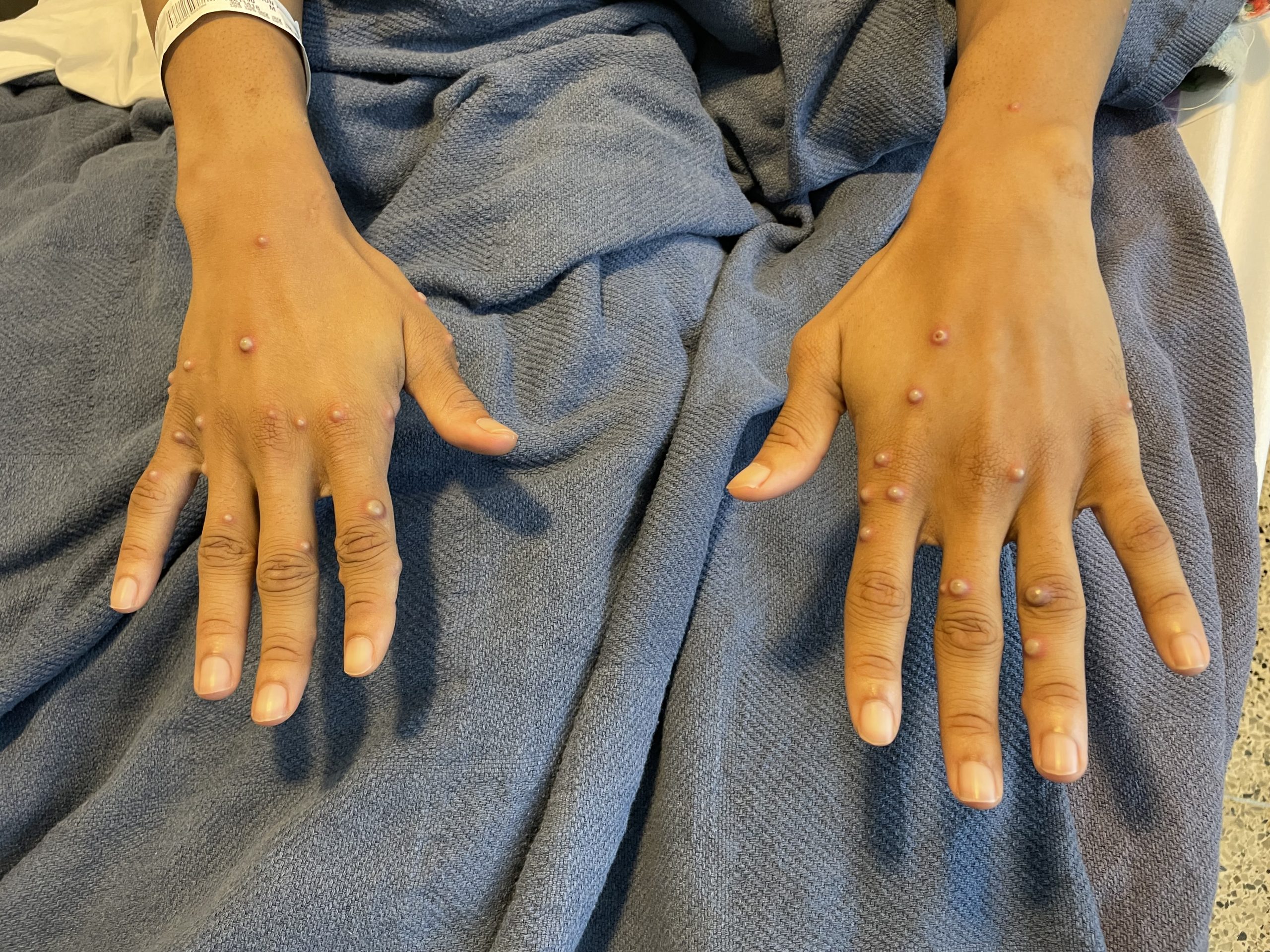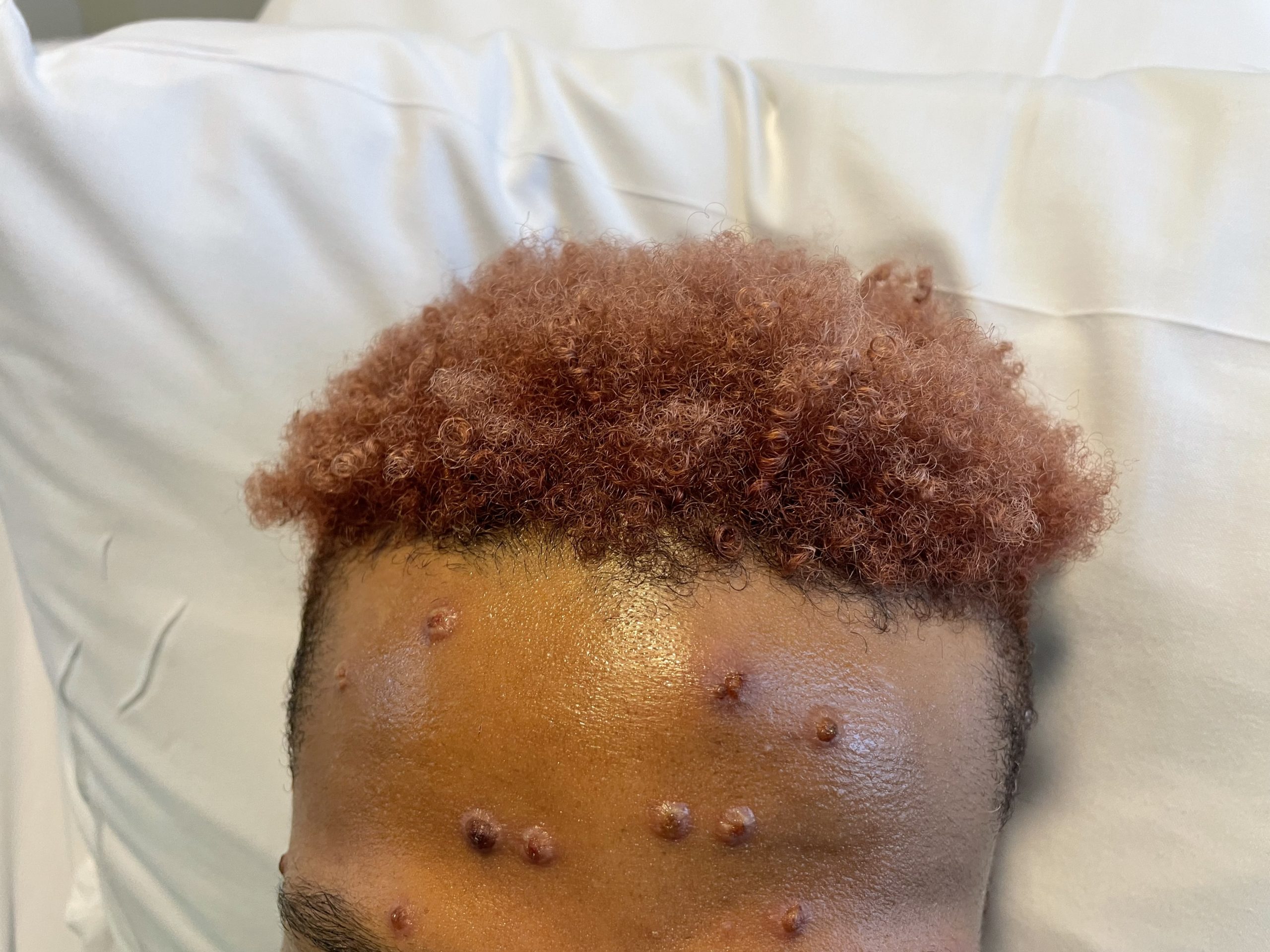Case Presentation: Monkeypox is an emerging viral infection outside of its endemic regions in west and central Africa that has become an epidemic worldwide. It is important for hospitalists to be aware of the symptoms and treatment options available for management of this disease.This is a case of a 32-year-old gentleman with a history of asthma and well controlled HIV who presented from home with worsening sore throat. He had recently been to the emergency department 2 days before with a 4-5 day history of malaise, myalgias, and sore throat along with an umbilical rash. He was discharged home after a presumed diagnosis of monkeypox with formal swab testing sent to the Department of Health at that time. A week prior to symptom onset he had traveled to New Orleans with friends where one of the members of the party did not feel well during the trip,and was diagnosed with monkeypox upon return home. He denies any sexual contact during the trip and last sexual encounter was 2 weeks prior to the trip. He represented to the Emergency Room with worsening sore throat, dysphagia with odynophagia, and inability to tolerate orals. On presentation, he was tachycardic, had a low-grade fever, but remaining vitals were within normal limits. On exam he had neck fullness with tenderness to the right lateral neck, diffuse umbilicated lesions on face, lips, tongue, upper/lower extremities, and genitals, but not on rectum. Lab and cultural evaluation showed normal electrolytes, negative COVID, negative pharyngeal chlamydia and gonorrhea testing. Prior respiratory culture did show 3+ Beta Hemolytic Streptococcus group C. He was started on IV fluids, magic mouthwash and cefadroxil for his strep pharyngitis. He also had his CD4 count checked, which came back as 390. On day 2 of hospitalization, he developed hematochezia with mucous filled bowel movements and on exam had new rectal lesions as well. Infectious disease was consulted and given pharyngitis, possible proctitis and diffuse involvement now also with a positive test for Monkeypox, recommended starting on Tpoxx also known as tecovirimat for treatment.He was started on treatment after receiving the medication from the Georgia Department of Health and his lesions started crusting over in the next few days. Pharyngeal symptoms also improved, as did his oral tolerance. He is planned for a 14 day course of Tpoxx and will follow up with the Georgia Department of Health
Discussion: Monkeypox is a zoonotic orthopox virus first described in 1970 in the Democratic Republic of Congo and endemic to west and central Africa. In early May 2022 there were cases reported in Europe and since then has spread quickly to have 16,016 cases reported in 75 countries and on 7/22/2022 has been declared a world public health emergency by the WHO2. There have been 5,189 cases reported in the United States as of 7/29/22 with 351 here in Georgia3. Per the CDC, treatment indications with Tecovirimat are: monkeypox infection in a patient younger than 8, pregnant or breastfeeding women, immunocompromised individuals (patients with an HIV infection and CD4 count of less than 200, individuals with cancer on chemotherapy, or recent transplant recipients) or involvement of “anatomical areas where it might constitute a special hazard” such as the mouth, anus, or eye 1.
Conclusions: This was a case of a severe monkeypox infection in the setting of an emerging worldwide epidemic4. There are limited treatments available and it is important to recognize treatment indications versus supportive care given limited data and emerging guidelines.


